In this article, we look at comparing several relatively affordable intraoral scanners with one of the most expensive scanners on the market.
The majority of these scanners have a recommended retail price (RRP) between $10-15K USD, with the exception of Dentsply Sirona’s CEREC Primescan, which is almost double (if not triple) the price point. Keep in mind that you can buy a Primescan Connect these days for a much lower price but this does not have the upgrade potential into the CEREC workflow like the AC unit.
At the Institute of Digital Dentistry, we are fortunate to have the opportunity to test all our intraoral scanners on real cases and real patients within a clinical environment. By doing so, we are able to provide an honest and unbiased review when comparing the performance of each intraoral scanner.
I scanned my patient - the same 44 crown preparation - with five different scanners on the same day:
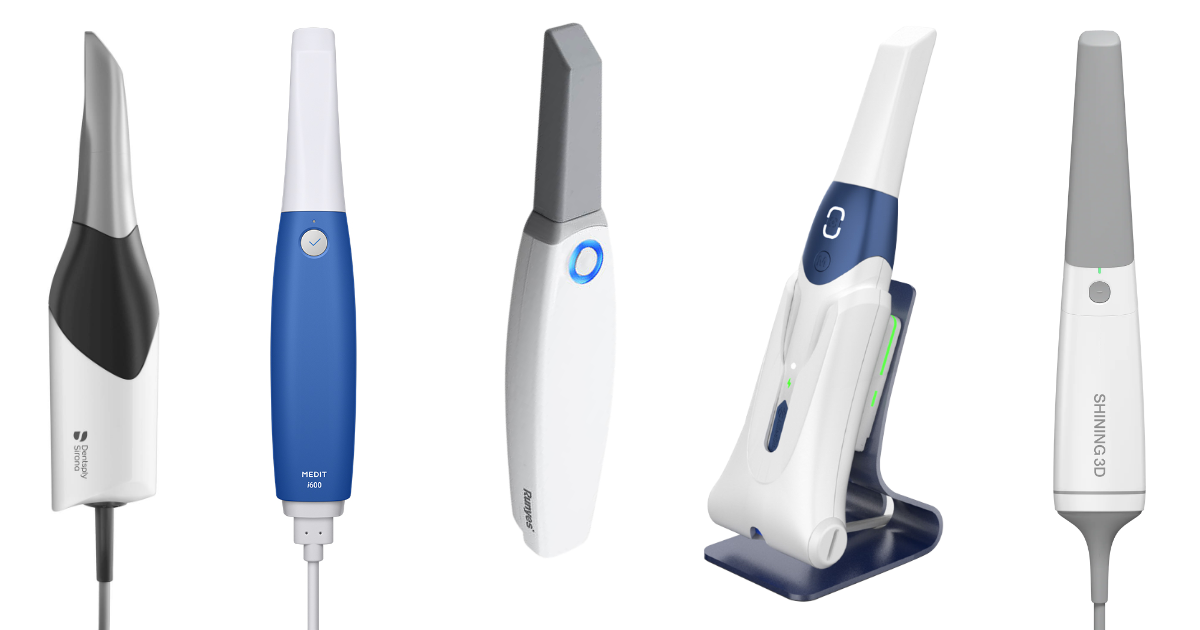
From left to right: CEREC Primescan, Medit i600, Runyes 3DS 2.0, Alliedstar AS 200E and Shining 3D Aoralscan 3.
Here are the results of the individual scans - pictures of the color scan, exported STLs, tessellated mesh, and close up of the prep margin to help you form your own opinion on these scanners.
Individual Scans in their Native Software
CEREC vs. Medit vs. Runyes vs. Alliedstar vs. Shining 3D.
Each intraoral scanner on the market is equipped with its own built-in scanning software. Most scanners are able to remove various scan artifacts such as movable soft tissue, cheeks and tongue through the use of AI.
We can preview how these scanners are able to capture color using the scanner’s native software. Every scanner captures color slightly differently depending on how accurately the scanner is able to pick up the light bouncing back off the prep and adjacent teeth.
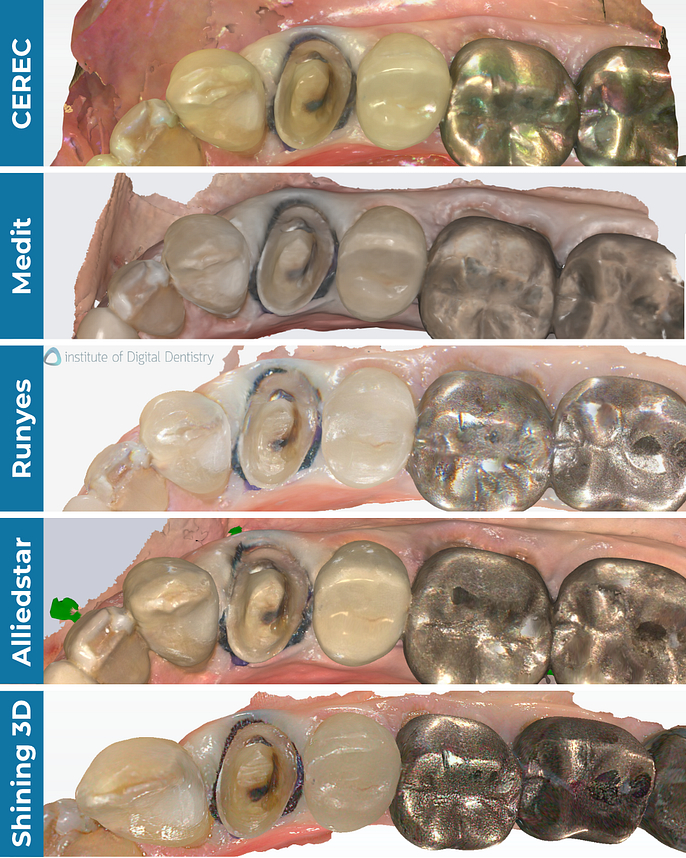
The processed color scans of the same tooth preparation captured using five different scanners, as previewed in their native software.
As you can see, there aren’t major deviations in color, with only slight differences in the scan brightness being observed such as the enhanced brightness of the Runyes 3DS 2.0 scan.
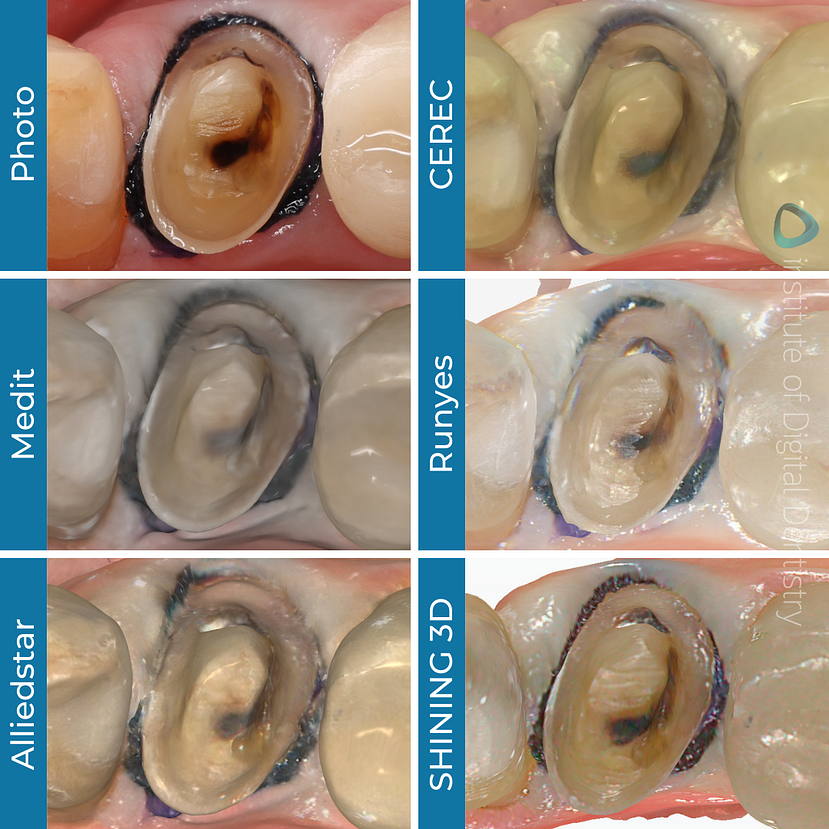
Close up photo and processed color scans of the same tooth preparation captured using five different scanners, as previewed in their native software.
Monochromatic scans can also be taken and previewed in their native software. These scans provide a better view of the quality of the prep and is recommended to check for any scan issues that would not be as obvious when viewed in color.
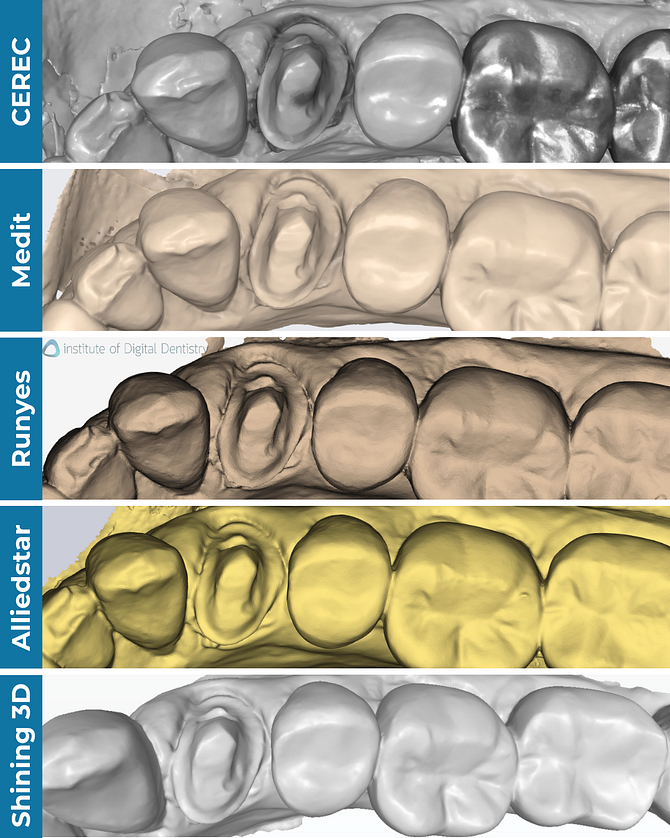
The processed monochromatic scans of the same tooth preparation captured using five different scanners, as previewed in their native software.
Exported Scans in Third-Party Software
Designed to be a replacement for traditional impression taking, whether that be alginate or PVS impressions, intraoral scans can be a quick and easy alternative for impression taking. Most intraoral scanners consist of an open architecture to allow for scans to be exported and sent to labs. These scans are usually exported in three various formats - STL, PLY or OBJ files.
STL files export as monochromatic scans whereas OBJ and PLY files store color and texture. Not all intraoral scanners are able to export OBJ and/or PLY files whereas STL files are widely used across the market as a default setting.
This particular set of scanners is capable of exporting scans in these formats:
- Shining 3D Aoralscan 3, Medit i600, Runyes 3DS 2.0 - STL, PLY and OBJ
- Alliedstar AS 200E - STL and PLY
- CEREC Primescan - STL only
Intraoral Scanner | STL | PLY | OBJ |
|---|---|---|---|
CEREC Primescan | 15.2 MB | - | - |
Medit i600 | 7 MB | 2.9 MB | 7.3 MB |
Runyes 3DS 2.0 | 10 MB | 10 MB | 13.4 MB |
Alliedstar AS 200E | 9.9 MB | 8.8 MB | - |
Shining 3D Aoralscan 3 | 2.8 MB | 2.8 MB | 17.1 MB |
As STL files are quite 'simple', the higher resolution or encoding of larger-sized objects require more facets (triangles within the tessellation) to cover the 2D surface of the scan. The CEREC Primescan, captured more of the movable tissue in comparison to the other intraoral scanners. This contributed to the large STL file size of the scan captured by CEREC Primescan at 15.2 MB. We found the varying size of PLY and OBJ files quite peculiar, the OBJ format being generally bigger than PLY and STL.
Labs use third-party CAD software's (in our comparison’s case we used Medit Design) to preview the received STL, PLY or OBJ files and create restorations based on these scans. By exporting the scans outside their native software, we are able to view the scans objectively without the customised color and optimised surface rendering of the individual scanner’s built-in software.
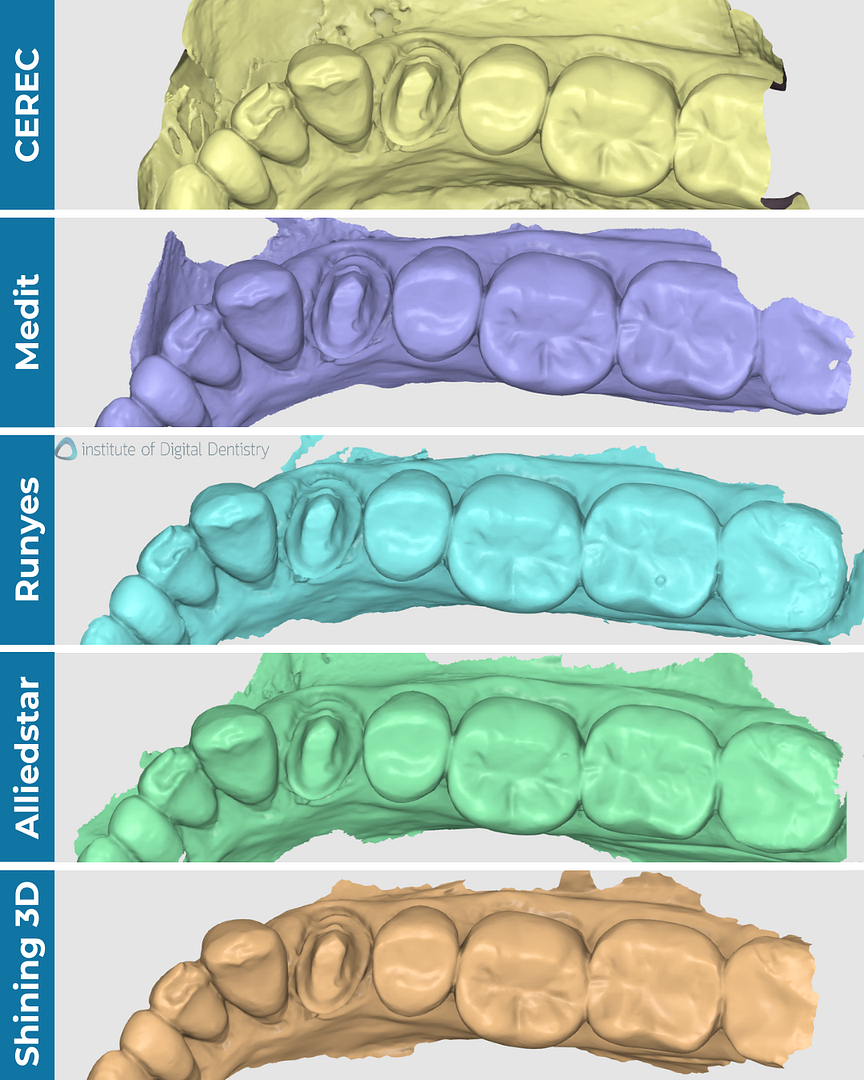
All scans were exported in an STL format and previewed in the Medit Design app.
We can also use Medit Design, or any other third-party software, to take a closer look at the amount and detail of data captured within each scan.
When we observe the close-up of the preps and their tessellated mesh, Primescan seems to have the densest mesh, closely followed by Aoralscan 3. With this being said, the remaining scanners - 200E, i600 and 3DS 2.0 also seem to be quite dense. There is still yet to be any studies investigating the clinical significance of mesh density, but in this case, a denser mesh does not necessarily indicate a ‘better scan’.
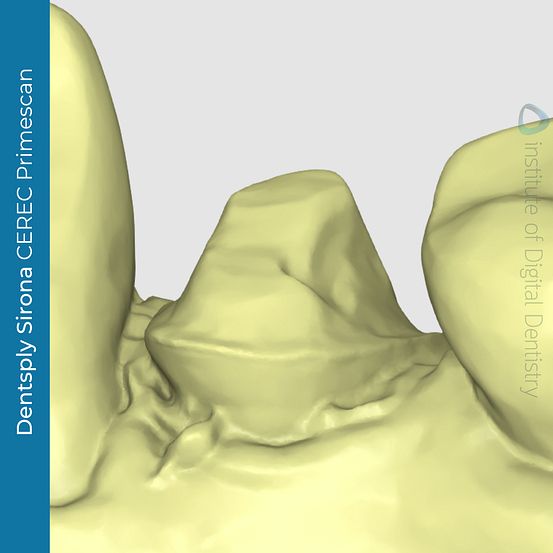
Tessellated meshes of each scan as previewed in the Medit Design app.
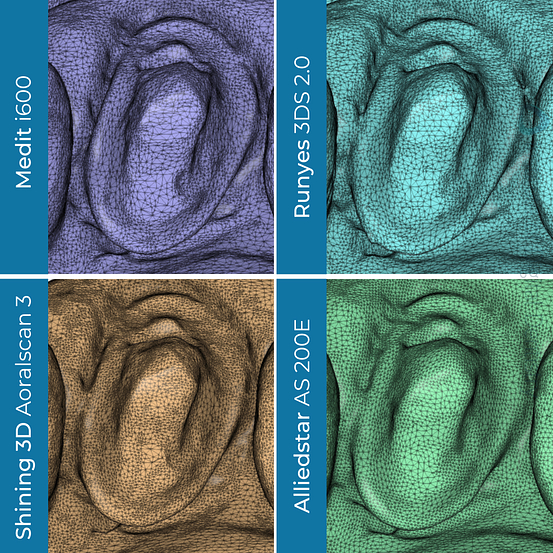
.
Scan Accuracy
Prep margin lines can also be reviewed using third-party software. Using Medit Design, Primescan appeared to have the most detailed or prominent margin line visible. Dentsply Sirona’s CEREC Primescan is commonly dubbed the gold standard of intraoral scanners, with it being one of the most accurate on the market.
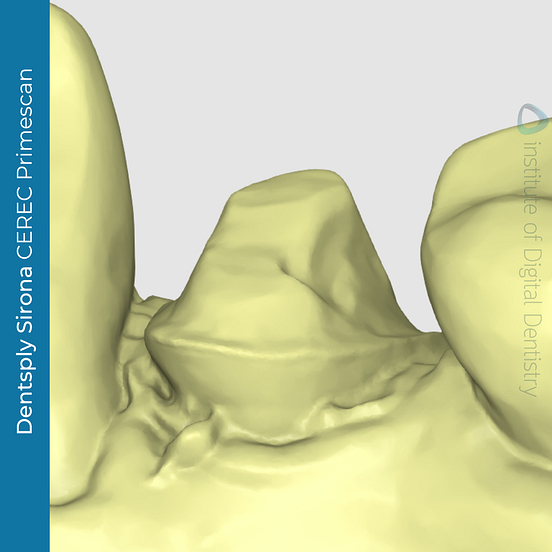
Mesiobuccal prep margin of each scan as previewed in the Medit Design app.
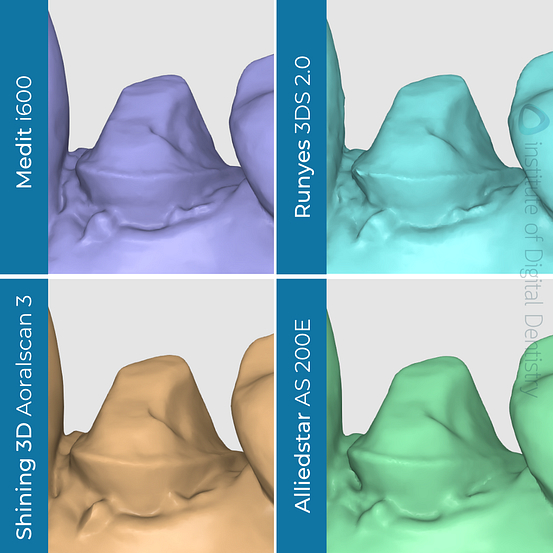
For this reason, we allocate Primescan as our point of reference in which we can view the deviations of the scans when aligned using Medit Design’s Deviation Display mode. Based off the colored deviation key, we can see that the scan meshes are -0.050 to 0.1 mm deviation in comparison to the scan taken with CEREC Primescan.
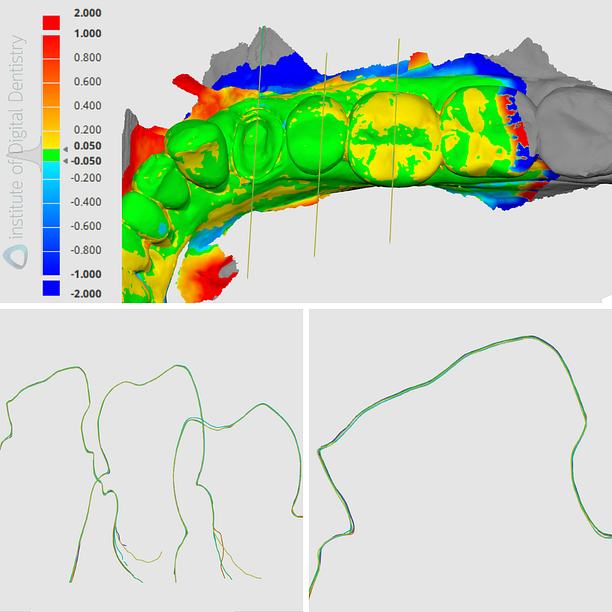
Deviation map of the scans as compared to CEREC’s scan and sectional view. There seems to be very little deviation around the prep area.
Within the same Display mode, we can view the aligned scans in a sectional view in which we can see that there is minimal difference between the scans.
Conclusion
Although there are slight differences across the five scans, both within their native software or within the third-party software, there is no significant deviation between all scans. There can be slight discrepancies in the individual scanner’s capability to accurately capture the preparation edge, this may subsequently affect margination by dentists or technicians.
As shown in our previous reviews, it is inconclusive whether or not there is any clinical significance on the impact a scanner's software and hardware have on its digital impressions. Further research is required in a controlled clinical environment to draw a proper conclusion about the wide range of scanners on the market.
In saying that, I have personally used each one of these scanners in my clinic to fabricate restorations in-house. In my experience every single one of these scanners worked completely fine to produce good results for 'basic' indications such as a single crown.
The discussion about accuracy seems to be dated. The key now is software, AI, workflows. This will differentiate scanners.

